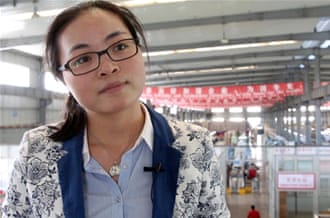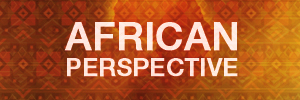A Stroll by the Casbah in Northern Morocco
DEC. 31, 2014
Photo
Chefchaouen, known for its blue-painted walls, is four hours from Fez.CreditBen Sklar for The New York Times
Overnighter
By
MELENA RYZIK
It was sometime around the fourth encore that the conga line really took off: a crowd of jubilant children and adults, in harem pants and jeans, snaking around the dramatically lit courtyard of an 18th-century casbah. A French gypsy-punk band, Basta Paï Paï, was tearing up the stage, its members wearing top hats and black tuxedo jackets trimmed with devilish red fins.
“Vous dansez bien, Chaouen,” the bare-chested frontman shouted, as the audience bounced in and around their seats. It was a spring night in Chefchaouen, a town nestled in the Rif Mountains in northern Morocco, and it seemed as if a good portion of the inhabitants — especially the younger ones — had filled the square. When the band announced a reggae song, a mosh pit nearly broke out.
“We’re trying to make something happen in Chaouen, culturally,” said Karim Khlifi, an organizer of the event. “Our role is to make Chaouen known around the world.”
Of course, Chefchaouen — or Chaouen, as it’s sometimes called — is already famous as an outrageously picturesque blue-walled city. Inside the ancient gated medina nearly every building is painted an arresting shade of cerulean or azure, the sky blues juxtaposed with white trim and terra-cotta rooftops. Twisting cobblestone paths lead up and up, around the ocher-colored casbah, past a crumbling cemetery where goats graze, to a landscape of green hills and mountaintops, uninterrupted sky extending beyond. It’s like being inside a Chagall painting.
Photo
Brilliant rugs hang on a rooftop terrace.CreditBen Sklar for The New York Times
Settled in the 15th century, Chefchaouen (pronounced shef-SHA-wen) has been home to Moorish and Jewish populations — the latter began the blue wall tradition generations ago, the story goes — and was part of the Spanish Moroccan enclave from 1920 to 1956. For non-Arabic-speakers here, Spanish is still far more common, and more useful, than French, Morocco’s main commercial language. And Chefchaouen continues to draw Europeans, especially Spaniards who alight in the summer after taking a ferry across the Strait of Gibraltar.
But despite its discovery by foreigners, Chefchaouen retains its relaxed native charms. It’s an artsy, bucolic retreat less than three hours’ drive from more bustling and seedy Tangier, and is popular with visitors for weekend hiking and climbing, and waterfall dips for locals.
Arriving in the evening after a bumpy drive through the mountains from Fez — about four hours away — a photographer, Ben Sklar, and I made a beeline for the Hotel Atlas, one of the few places to get a beer in town. (Though not illegal, alcohol is heavily regulated in Morocco, a Muslim country.) Like many hotels here it advertised mountain views, though the scene in the slightly dated lobby was also arresting: a musician at a keyboard, singing over synthesized Middle Eastern dance tunes, as men drank Casablanca beer around him. Aside from concerts and hours spent sipping mint tea in cafes, this is the local night life. The Hotel Parador, closer to the medina, has a similar vibe, but draws more out-of-towners, including a motorcycle convention when we were there.
We left our car nearby at a lot watched by an amiable attendant for a few dirham a night. There’s no need or room for a car inside the medina, which is compact enough to be walkable, if sometimes steep; petit taxis, as they’re known here, congregate outside the bigger hotels for short trips outside town or to the bus station. (There are no trains.)
En route to the parking spot, we got a quick lesson in the hospitality of Chaouen when our SUV became stuck in a narrow blind alley. Backing out was not an option, though a dozen men materialized to help us try, communicating in three languages. Before we knew it, and without any encouragement from us, they exchanged a few words, convened around us and, like a crew of real-life superheros, simply picked up the car. They plopped it down a few feet over, and we were able to navigate out. “First time here? Welcome!” one helper said, waving us on.
The mellow vibe might be cultural or medicinal: Chefchaouen is also known for being smack in the middle of hashish country. The Rif Mountains are the site of vast kif, or hashish, farms, and we were barely in town for an hour before a man approached, inviting us to visit one. We politely declined, and he easily moved on (the touts here are not as aggressive as in other Moroccan cities). Though smoking is technically illegal, young backpackers and hippie couples do flock here; it’s a well-worn stop on the global chill-out trail.
Just strolling the streets of the medina is relaxing enough, though. Around every corner is a vista that’s Instagramable: sacks of rainbow pigment, for paints, below a blue-shuttered window; a vendor squeezing fresh orange juice, with bright peels curling around his stand, in a small square; boys playing soccer in the alleys or skittering down the steps, loops of freshly made sfenj (Moroccan doughnuts) around their arms. Locals are not keen on having their picture taken, but they don’t mind your admiring the architecture or the handicrafts: You can get a pair of babouche, soft leather slippers, custom-made in two days, and the Berbers who live in the surrounding villages are known for their ironwork and textiles.
The items are all available at the markets around the medina’s four babs, or entry gates, where bargaining is de rigueur, but on the advice of a hotel manager, we stopped in a more fixed-price shop up the street. There we found Fadal, an 80-year-old artisan, still busily operating his loom.
“I’ve been in photos all over the world,” he said in French, as he spun white and blue wool thread into wide striped blankets. His son and apprentice draped me with fabric so I looked like a Berber villager, complete with pompommed hat, and I left with a stack of pillowcases and throws. Sometimes paying retail has its own rewards.
Photo
Chefchaouen draws hikers and families to its waterfall-fed streams.CreditBen Sklar for The New York Times
Thanks to the regular influx of hash tourists, there is a plethora of hostels and other budget accommodations in town, but I preferred Casa Perleta, run by a lively and supremely helpful Spanish woman named Begoña. Like other hotels, it was built around a leafy central courtyard and decorated with traditional Moroccan furniture, patterns and lanterns. Our room was cool and effortlessly welcoming, with a low couch in the front sitting area.
Breakfast was served on the shaded roof terrace, a hillside of cyan and Prussian blue houses stretching out before a spread of olives and olive oil, fresh feta cheese, jam and Moroccan doughy treats, including sfenj. Chefchaouen is not known for adventurous dining; most of the dozen or so restaurants serve the same medley of tagines, lamb meatballs and harira soup. At Chez Hicham near the casbah, the pastilla — a flaky pastry stuffed with lamb and topped with toasted Marcona almonds — and the view from the tiered terraces stood out.
The best meal, though, was a few miles from town at Caiat, with a wraparound mountain-view porch, a lamb tagine dotted with plump prunes, and beer and wine on the menu. Run by an adventurous Portuguese couple, it’s the must-stop for rock-climbers in the area. Tired of Moroccan spicing, we also made several trips to the Pizzeria Mandala, a rare Italian spot in Chefchaouen, where the menu includes four-cheese pizza, spaghetti Bolognese and steak.
Just past the gates of the medina there are more cafes and sandwich shops, and I joined locals strolling Avenue Hassan II, the wide main boulevard. Lined with fragrant orange trees, it ends at a pleasant circular park, where chirping birds compete with the call to prayer and teenagers hang out, armed with freshly fried potato chips and candy from roadside vendors. It’s a taste of the scene at the nearby national parks, reachable by “grand” taxi (negotiate the price first) if you don’t have a car.
On a Sunday we drove a half-hour outside town for a hike in Akchour, aiming for the natural structure known as Pont de Dieu, God’s Bridge. The parking lot was filled with minibuses and carousing local youth, like a tailgate without the beer. Young families waded in the pools at the base of the mountain, picnicking by the waterfall-fed streams. A few enterprising restaurants delivered right to the water’s edge, waiters carrying mint teas by the half-dozen.
We ascended the trail, followed by scampering children and, as we went higher, European trekkers in sturdy shoes. Wildflowers sprouted along the path. It was a 45-minute climb, not too strenuous, to the bridge, an 80-foot-high rock arch. No guidebooks or advice prepared us for what we found there: Tucked way up in a mud and plant hut, was — wait for it! — another cafe.
There was a wooden table and a stone banquette covered with a straw mat. Behind the mud counter, up popped the proprietor, Mohammed. He built his workplace himself, he explained in Spanish. It took seven months. The thatched roof was held up by branches, and a cot was hidden in the back. For the last decade, he’s been climbing down daily from his village nearby, dispensing sodas and advice, fetching lost keys from the rocks and preparing the occasional tagine for hungry swimmers, who shout their orders from the stream below.
“I’m the jefe of Puente de Dios,” he said proudly, giving us free drinks and cookies. We took in the mile-long views of the surrounding countryside and the rush of the waterfall, sipped our tea, and agreed.
Where to Stay
Casa Perleta (Medina, Bab el Souk entrance,
casaperleta.com, rooms from 45 euros a night, including breakfast; about $54 at $1.20 to the euro) is small, beautiful and peaceful, its cheer matched only by the likable manager, who offers travel advice and cultural insight in equal measure.
Hotel Parador (Place el Makhzen,
hotel-parador.com, rooms from 480 dirham a night; $53, at about 9 dirham to the dollar) is slightly shabby but conveniently located at the base of the medina, with a restaurant and bar.
 INDEPENDENT MEDIAGauteng has the best economy and education of all the provinces, according to a report by the SA Institute for Race Relations. File photo: Motshwari Mofokeng
INDEPENDENT MEDIAGauteng has the best economy and education of all the provinces, according to a report by the SA Institute for Race Relations. File photo: Motshwari Mofokeng


































